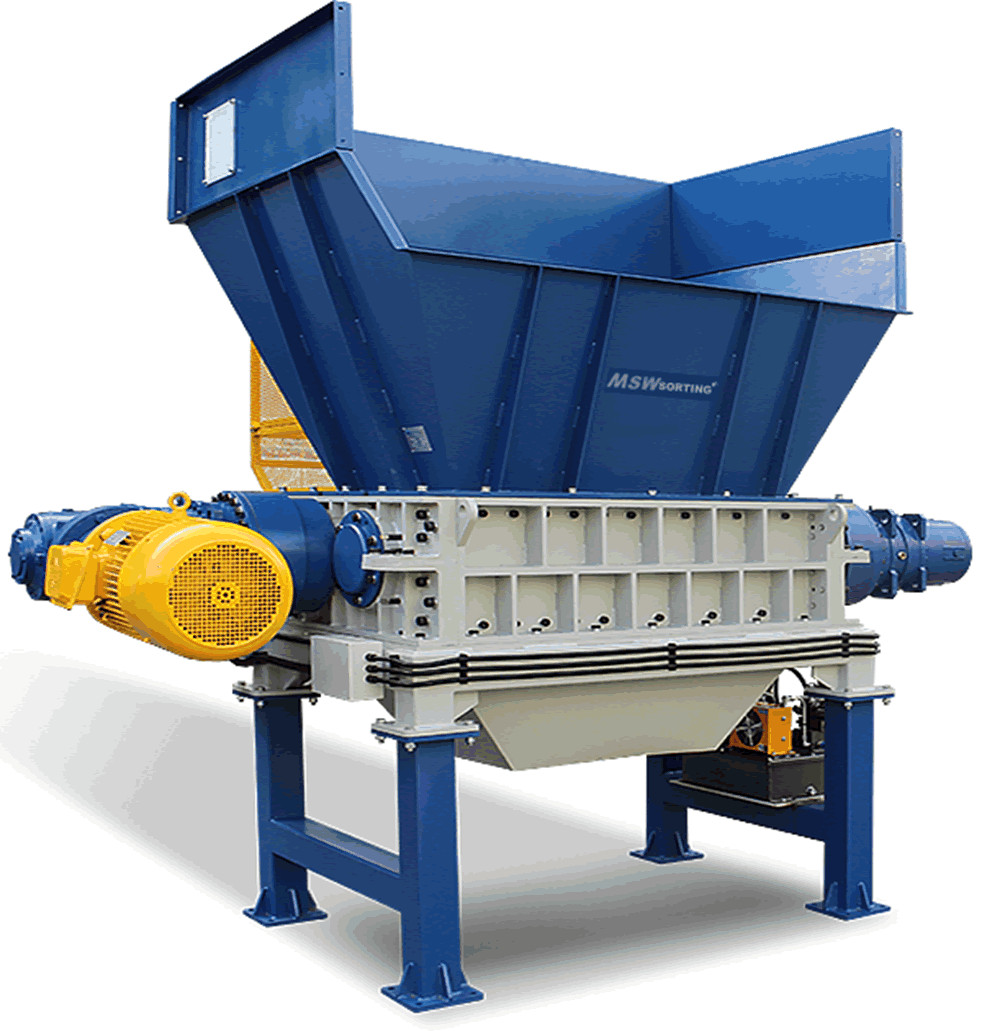Solid Waste Primary Shredder

Introduction to Solid Waste Primary Shredder
A solid waste primary shredder is a heavy-duty machine designed for the initial stage of waste processing, breaking down bulky and mixed waste into smaller, manageable pieces. This essential equipment is widely used in municipal solid waste (MSW) management, industrial waste processing, and recycling facilities.
The primary function of these shredders is to reduce the volume of waste, making it easier for transportation, sorting, and further treatment. By efficiently processing a wide range of waste materials, they contribute to improved recycling rates and more effective waste disposal methods.
Equipped with high-torque, low-speed cutting systems, solid waste primary shredders can handle everything from household waste and organic matter to plastics, textiles, and construction debris. Their robust design ensures consistent performance in demanding waste management operations.
How a Solid Waste Primary Shredder Works
The working principle of a solid waste primary shredder involves a set of rotating blades or shafts that cut, tear, and shear waste materials into smaller fragments. Unlike high-speed grinders, these shredders operate at lower speeds with higher torque, allowing them to handle large and dense waste without clogging.
Most primary shredders use either a single-shaft or dual-shaft design. Single-shaft shredders use a single drum with sharp teeth to break down waste, while dual-shaft shredders feature two interlocking shafts for more efficient processing. Some advanced models even have four shafts for enhanced shredding capacity.
After waste is fed into the shredder, the blades gradually break it down into smaller pieces. The shredded waste is then discharged onto conveyor belts or into storage bins, where it can be sorted for recycling, further processing, or disposal.
Key Features of Solid Waste Primary Shredders
Solid waste primary shredders are engineered with several advanced features that enhance their performance and durability. These features ensure reliable operation even in the most demanding environments.
One of the most critical aspects of these machines is their cutting system. The blades are made from high-strength alloy steel, designed to withstand heavy loads and resist wear and tear. Some models also feature replaceable and adjustable cutting elements to extend service life.
Another key feature is the machine’s overload protection system. This helps prevent damage caused by excessive material loads, automatically stopping the shredder if it detects a blockage or mechanical strain. This ensures operational safety and extends the lifespan of the equipment.
Applications of Solid Waste Primary Shredders
Solid waste primary shredders are used in a variety of industries and waste management facilities. Their ability to process diverse waste streams makes them indispensable in large-scale waste processing operations.
One of the most common applications is municipal solid waste (MSW) processing. Cities and waste collection agencies use these shredders to reduce the size of household waste before it is sent to recycling or landfill sites. This improves waste handling efficiency and reduces environmental impact.
In industrial settings, primary shredders are used to manage production waste, including packaging materials, factory scrap, and mixed recyclables. They also play a crucial role in processing construction and demolition debris, breaking down materials such as wood, drywall, and concrete.
Advantages of Using a Solid Waste Primary Shredder
Investing in a solid waste primary shredder brings numerous benefits to waste management facilities, municipalities, and industries seeking efficient waste reduction solutions. One of the main advantages is waste volume reduction, which makes waste easier to transport and store.
Another key benefit is improved material recovery. By breaking waste into smaller pieces, these shredders facilitate better sorting and recycling, allowing for the extraction of valuable materials such as metals, plastics, and organic matter for composting or fuel production.
Additionally, primary shredders contribute to environmental sustainability by reducing the amount of waste sent to landfills. With more efficient waste processing and recycling, they help lower greenhouse gas emissions and minimize the ecological footprint of waste disposal operations.